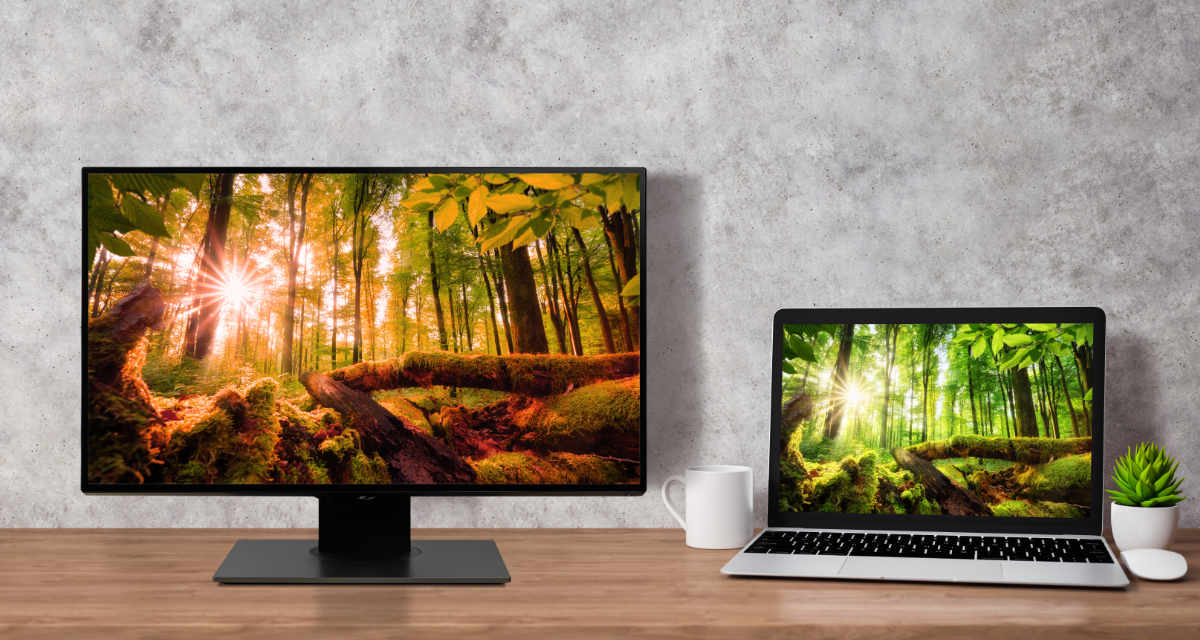Your monitor must be running in its native resolution and your image viewer must not resize the image.
Most LCD monitors have a gamma setting that you can play with. Inaddition, the contrast setting can affect this test, but don't changethe contrast so much that it fails the quickcontrast test.
Part of the advantage of having speaker calibration software is being able to use the tools to do some of the tasks for you, such as Auto-Tune. In the case of speaker calibration software, tools like Tone Generator Software can be used to help you adjust the tone of the sounds to improve their quality.
- How to calibrate your monitor (Mac) Learning how to calibrate your monitor on a Mac is slightly different. The Display Calibrator Assistant built into OS X is accessed via the Displays icon in the System Preferences menu. From there, click the 'Color' tab, then hold down the Option key and click the 'Calibrate' button.
- Top 6 Monitor calibrator for Mac. Below are listed out the best monitor calibration software tools, and you can check them below with more details. DisplayCAL (formerly known as dispcalGUI) is a display calibration and profiling solution with a focus on accuracy and versatility.
- The profile is automatically installed, defined as the default profile for the monitor and the Windows 7 Display Calibration feature is automatically enabled. There is no need for any supporting programs anymore because QuickGamma Version 4 is all it takes to achieve a good visual monitor gamma calibration.
The four bars at the left are the most important ones to get right. They represent a luminance that is 48% of the maximum. When the 48% setting iscorrect, you may wish to fiddle with other settings to get the bars for 25%and 10% to blend in at the 2.2 reading.
Don't be upset if you can't find a monitor setting that shows aconsistent gamma of 2.2 for all luminances. There are very fewmonitors which can do that without some form of color management inthe operating system. For photo editing, it is best to create an ICCmonitor profile tailored for your monitor with the help of a hardwarecalibrator, such as a Datacolor Spyder or an EZcolor Eye One, or maybeat least check the color rendering with for example a PantoneHuey. Apart from getting a better gamma response, you will also geta better color rendering with tools like this.
Background
What it should look like
On the right is what the gamma calibration test image should look like.Mac users
Note for Mac users: check your system gamma for this test; it'sunder Apple > System Preferences > Displays > Color > Calibrate >Gamma. If it is set to 1.8, of course the test should show a value1.8.
Adjusting the video card driver
Some video card drivers in Windows offer a possibility to manuallycompensate for a bad gamma characteristic of your monitor. See thescreenshot below: go to 'Display Properties' > 'Settings' (1) >'Advanced' (2) > GeForce (if you have an NVIDIA Geforce, 3) > Colorcorrection (4) > Advanced mode (5). Then adjust the curves with yourmouse. It works best to first optimize the 48% image with a point at x=0.72(72% of the horizontal scale of the curve plot; the rightmost yellow line),then the point at x=0.53 for the 25% image, and finally the point at x=0.35for the 10% image.
About these images
Other gamma test images on the web will typically compare a 50% grey areawith a black-and-white pattern, rather than do it for several luminancelevels and individually for the red, green, and blue components. As you willprobably have seen, the check on a 50% grey level is not representative for thebehavior of your monitor over various grey levels and individual RGB colorcomponents. The reason for using 48% rather than 50% as a luminance is thatmany LCD screens have saturation issues in the last 5 percent of theirbrightness range that would distort the gamma measurement.
These PNG images are without embedded gamma information. I believe that thetest works, even in browsers with broken gamma support such as InternetExplorer 6 and 7. For more information about gamma (links open in new window):
- Gammacorrection (wikipedia)
- sRGB color space (wikipedia)
- The PNG Gamma dilemma - Gamma problems with IE and Safari.
© Copyright Han-Kwang Nienhuys, 2008. The text and accompanying images may not be redistributed. This includes placing the images on other websites, either as a copy or through hotlinking. Read more...
What is monitor color calibration?
One of the most important things to take into account when editing videos are colors, shadows, and the brightness of the video. Monitor calibration is setting your screen to a certain standard to ensure you get the most realistic and professional result.
Why is monitor color calibration important for video editors?

Monitor calibration is likely most important for video editors because their videos will sometimes be used time and time again for campaigns — be it across the hero of a website, printed on a leaflet, or as a header of an email newsletter. Monitor color calibration makes the entire process more efficient (avoiding mistakes and color hues you weren’t going for) and ensures you truly get the result you were going for.
How often should you calibrate your monitor?
You should calibrate your monitor anywhere between 2-6 weeks / at least once a month if you’re professionally working in video editing and color correction.
How to calibrate your monitor?
Generally speaking, there are a few ways to calibrate your monitor — with an online tool, desktop hardware, or integrated monitor calibration tools.
One we can not recommend is using an online tool, these tools have been known to be quick-fix options that simply cannot achieve a professional calibration effect.
The quickest way to get results for free is to use the windows and mac integrated calibration tools. But before you get started with any type of calibration, be sure your computer or laptop is up and running for at least 30 mins for it to hit its usual brightness level.
If you’re really serious about calibration though, even these methods won’t do because it relies on you manually adjusting the monitor according to what you see. And what you see is completely subjective. If you want to be sure you get things right, you’ll want to invest in hardware calibration with complimentary software — more on that below, but first, let’s show you how things are done on Windows and Mac:
How to calibrate your Windows 10 monitor
- Go ahead and enter ‚Display settings‘ by right-clicking on your screen or searching for it in your search back
- Go to ‚Advanced display settings
- Choose recommended resolution.
- Now go ahead and choose ‚Color calibration‘ > ‚Next‘.
- Adjust, your gamma, brightness, contrast according and color balance according to the examples.
- Select ‚Finish‘ to complete the calibration.
How to calibrate your Mac monitor
- Go ahead and select the Apple icon in the top left corner of your screen.
- Now go to ‚System Preferences’ > ‚Displays‘ > ‚Color‘.
- Choose’Calibrate‘ > ‚Screen calibration assistant‘.
- Select a white point according to the example.
- Give your color profile a name.
- Click on ‚Finish‘.
Important monitor calibration values to watch out for

If you decide to go the manual route of color calibration, these are the values you should watch out for and adjust.
- White point
The white point of a screen describes just how white a screen is and whether the white is warmer or cooler (measured in Kelvin just like light bulbs). If you are editing digital videos on an LCD screen we recommend setting a white point at 6500K whereas if you are editing for print you should set your screen to 5000K.
- Gamma settings
Gamma affects brightness and color ratios — aka the contrast of colors on the screen. This setting depends on where you think the video will be viewed, if it’s going to be viewed on a screen where there is brightness all around like on a tv in a meeting room or phone you should set gamma to 2.2 whereas if you’re working on a film that will be viewed in a dark room you should go for 2.4.
- Luminance
This is how bright your screen is, which you should keep consistent throughout the process of color correcting a video. The standard is known to be at 120.

What tools can you use for screen calibration?
Other than using the Mac and Windows integrated tools, you can also use so-called LCD test patterns and images to adjust your screen to match these — you can find some of those here.
Best Monitor Calibrator 2021
All set to calibrate your monitor? Get to it and once you’re done check out our guide on color grading vs. color correction.



